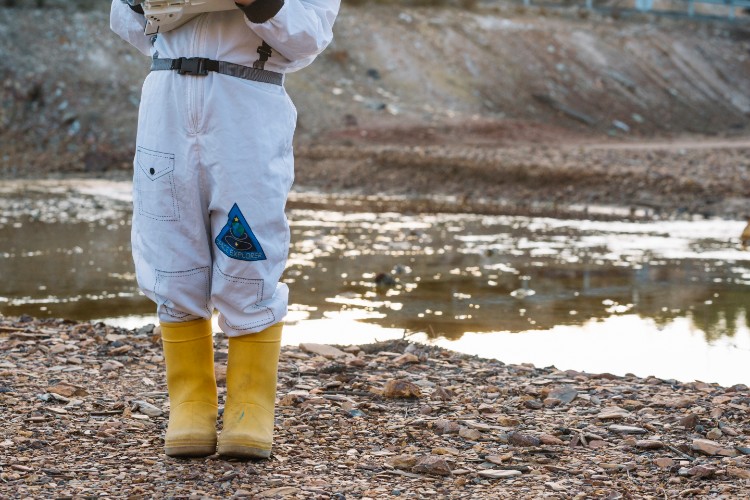Why is Disinfection Last in Water Treatment

We work every day with water. We drink it. We clean with it. We shower in it.
Yet many people still wonder: Why is Disinfection Last in Water Treatment? We build water systems and feel excited to answer this question with heart and science together.
We trust our water, yet our mission pushes us to understand what hides inside. Water travels a long road before it arrives at our tap, safe to drink.
It fights dirt, chemicals, and many tiny threats. Water treatment stands like a movie hero with several action scenes. The big finale always comes last. That final punch knocks out bacteria, viruses, and protozoa.
Below, we share why that final knockout matters so much.
🌊 The Full Journey of Treating Water
Water treatment works in steps
We treat the water like this:
Remove big stuff
Take out small particles
Filter away invisible dust
Kill the bad microorganisms
First, We Remove the Big Trouble
Twigs, mud, sand, and trash float in raw water
We screen them out fast, so machines stay safe
This step shapes the base to boost water quality
Next, We Make Particles Stick Together
Small pieces do not sink by themselves
We add agents that group tiny bits into heavier flocks
These flocks drop to the bottom like rocks in a lake
We keep only the clear water on top
Smooth progress
Filtration Finishes the Deep Clean
Sand filters strain tiny particles
Activated carbon grabs nasty tastes and odors
Our water starts to look alive again
Still not safe yet, though
🔥 The Big Reason Disinfection Comes Last
Germs Hide Very Well
If we try disinfecting water too early, then dirt blocks the killer power
Germs play hide and seek
Particles create shields around them
We remove these shields first
Then disinfection strikes clean and strong
We Protect Water Quality
The disinfection process needs a clean stage
Less organic matter means fewer byproducts
Cleaner water equals safer water
Environmental Protection Agency rules guide this
We Stop Germ Comebacks
Late disinfection prevents sneaky regrowth
We do not allow bacteria, viruses, and protozoa to recover
Nobody wants a comeback tour inside drinking water
Not cool at all
⚔️ Disinfecting Water: The Real Showdown
Water disinfection gives the final blow to contamination
So what tools do we use
Many heroes work together to keep the water supply protected
Common Disinfection Methods
Chlorination
Ultraviolet UV light
Chlorine dioxide
Advanced oxidation technology
Each tool hits germs with a different style
We pick what fits best for the local system and safety needs
🧪 Chlorination: A Classic Champion
Chlorination delivers powerful germ control
It knocks out pathogens through oxidation
We like this since chlorine sticks around inside pipes
It creates a shield to stop new invaders
What About Sodium Hypochlorite
Sodium hypochlorite works like a liquid form of chlorine
Water utilities trust it as a strong oxidizing agent
We love this method because it keeps treated water protected from contamination
We produce systems that create it on-site
Yes, we feel proud
Our Sodium Hypochlorite Generator also supports environmental protection
It helps kill germs while lowering storage risks
That safe feeling matters for everyone
☀️ UV Light: Clean Superpower
Ultraviolet UV light shines deep into germs
It changes their DNA structure
This makes germs unable to multiply
UV works best after filtration
Clear water lets the light slice through the danger fast
One downside: no residual left behind
So piping systems might use backup disinfectants, too
🧊 Chlorine Dioxide: Silent But Deadly
Chlorine dioxide attacks pathogens with strong oxidation
It works even in tougher water
Many water utilities trust it for stable water quality
The effects last longer and reduce byproducts
Modern and reliable
✅ Why We Feel Strongly About Last Step Disinfection
We want our kids to drink clean, safe water
We want hospitals, restaurants, and gyms to trust their supply
We want every household to be protected against contaminated water
Putting disinfection last ensures:
Maximum germ kill rate
Better taste and smell
Long-lasting protection
Higher safety levels
Better compliance with health standards
This step transforms treated water into real drinking water
Life-supporting water
Water that gives confidence
🧠 Quick Recap: Science in Simple Words
Why is Disinfection Last in Water Treatment
Here is the short answer:
Dirt gets removed first
Filtration clears tiny solids
Then disinfection strikes directly at microorganisms
Clean water lets disinfectants do their full power
The final step gives protection until the tap
The order protects our health
It looks simple
Still, every stage matters as part of a strong shield
🎯 Our Mission With Water Disinfection
We design tools that help disinfect water with less risk
We want families to smile when they fill a glass
Our solutions support water utilities worldwide
Safer systems
Safer life
Stronger future
We promise to keep improving
Better equipment
Better disinfection
Better planet
✅ Our favorite disinfection includes chlorination because:
Reliable germ control
Long pipe protection
Clear and safe drinking water
Lower cost for many regions
We cheer for UV, too, when needed
Different heroes for different battles
😄 A Fun Twist: Water vs Germs
Imagine germs as villains wearing tiny cloaks
Pretreatment removes the cloaks
Filtration exposes them completely
Disinfection then swings a giant sword
Boom
No survivors
Victory tastes like fresh drinking water
🔚 Final Thoughts From Our Heart
We feel proud to work in water disinfection
We feel joy when science protects families
Every time water leaves a plant, it becomes a promise
A promise of life, comfort, and trust
Water treatment ends with a strong last strike
We always keep that strike precise
Disinfection last means safety first
Always
